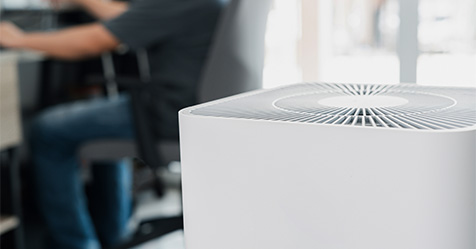The National Safety Council reports that “every four minutes, someone is killed as a result of a preventable injury. After years of decline, the rate of unintentional injuries and deaths in the U.S. has risen to new and unacceptable levels.”
Accidents and emergency situations can happen in any environment, in any industry, and at any time.
While our workplaces are often protected by devoted police, security officers, and efficient alarm systems, each individual must also take an active role in maintaining a safe work environment.
Staying aware of your surroundings and recognizing any potential hazards at work will significantly reduce risks.
The following tips are to ensure a safer and more productive workplace.
Cleanliness is next to godliness
This ancient proverb rings true today with its universal message.
In a workplace, it’s important that cleaning agents are available to everyone to routinely clean and disinfect common areas.
Cleanliness is important for all employees, not just food service and medical workers.
To reduce or eliminate the spread of bacteria and viruses, remind workers to wash their hands thoroughly and often — at least 10 to 20 seconds each hand washing.
Hatch a plan
Establish and communicate a company emergency/disaster plan to all employees and make sure everyone is educated on the plan — staff notification, evacuation, and an assembly location should be included in the plan.
If a crisis happens, how will you communicate this with your employees?
Establishing a communications system for employees is also key.
This should include the notification of staff as well as emergency response personnel.
All plans should be periodically tested through physical drills, which include verifying emergency supplies such as batteries, first aid kits, and flashlights.
Emergency contact lists for employees, clients and police, fire, and paramedic departments should also be reviewed and updated regularly.
Have handy — in your wallet or purse — the contact numbers for your family, child care personnel, and your co-workers.
Even if you think you’ve memorized the number, in a time of crisis, you may not have ready recall.
If you’re part of the Blackberry or Treo generation, keep your handset fully charged and up-to-date with vital contact information.
You may wish to print a hard copy of your electronic organizer contact list to fold into your plan.
Do you have a neighbor you can rely on to pick up the kids if you’re unable to get to them quickly?
If telephone numbers are over-utilized and ringing busy in the disaster zone, what out-of-town friend or associate can act as your family’s message center?
Maintain get-up-and-go gear
While the likelihood of an emergency may be low, an investment in portable “go gear” acts as insurance.
Portable knapsacks work best as grab-and-go emergency kits.
Stash your knapsack with an extra set of eyeglasses and house keys, a small amount of cash, a copy of your plan, mass transportation cards/information, a spare credit card, prescription medications, a whistle, a pair of comfortable shoes or sneakers, a portable radio, flashlights, and a standard first aid kit.
The kit should include three days of food and water rations.
Bottled water, protein bars, and dried food should also be tucked away in your kit.
To breathe easier in disaster situations, it’s recommended that your kit include a smoke mask.
These emergency respiratory smoke-hoods are designed to assist in the safe exit from contaminated environments.
Stash extra batteries for your cell phone, radio, and flashlights into your knapsack.
If the power fails, electric telephones and radios won’t work.
Drive safe
Driving is second nature and the dangers it presents are something we all take for granted.
Whether you are driving your own vehicle to work, a company vehicle to a meeting, or heavy machinery around a construction site, safety should always be on your mind.
Accidents are costly, threaten lives, and can often be avoided.
Take your time and consider safety your first priority.
Safety instructions matter
Use all equipment, including ladders and electrical cords, properly as per the instructions.
Follow the manufacturer’s safety guidelines on all electrical equipment.
Be sure to lock all doors and shut down all electrical devices when leaving your work space.
Report unidentified spills
If you come across a chemical spill and cannot identify the substance, do not touch or move it.
Barricade the area and report the spill.
Never take a hazardous chemical out of its original container and store it in something else.
Clear the way
Accidents are not always monumental in scope and the smallest things can often cause major damage.
It is important to always keep all working and walking surfaces free of spills and debris.
Safety may be the mantra in warehouses and at industrial sites, but employees in corporate settings should be on alert as well.
Spilled coffee in a stairwell or an electrical cord stretched across a walkway can lead to slips and falls that result in serious injuries.
Other tips to consider
Become familiar with the people in your immediate work area so you can easily identify an individual who may not belong there.
Report a stranger or co-worker displaying suspicious or potentially threatening behavior.
Don’t share access-control codes or keys with anyone.
Associates and vendors, even those who visit often, should be treated as guests and should follow guest access procedures.
Personal protection equipment (PPE) should be taken seriously.
Use hard hats, safety glasses, gloves, and other equipment when appropriate.
Keep combustibles, such as wood, paper, and trash away from all heat sources.
If an accident does occur, it is important to report it immediately.
Accurate records need to be kept and changes may need to be made to prevent future dangerous situations.
Taking personal accountability for your actions and proactively contributing to a secure working atmosphere before a problem occurs is the best way to stay safe.
Keep to the basics and take the time to develop comprehensive plans.
Communicating those plans via policies, procedures, and announcements as well as actually conducting exercises will ensure the health and safety of your employees and emergency responders.


